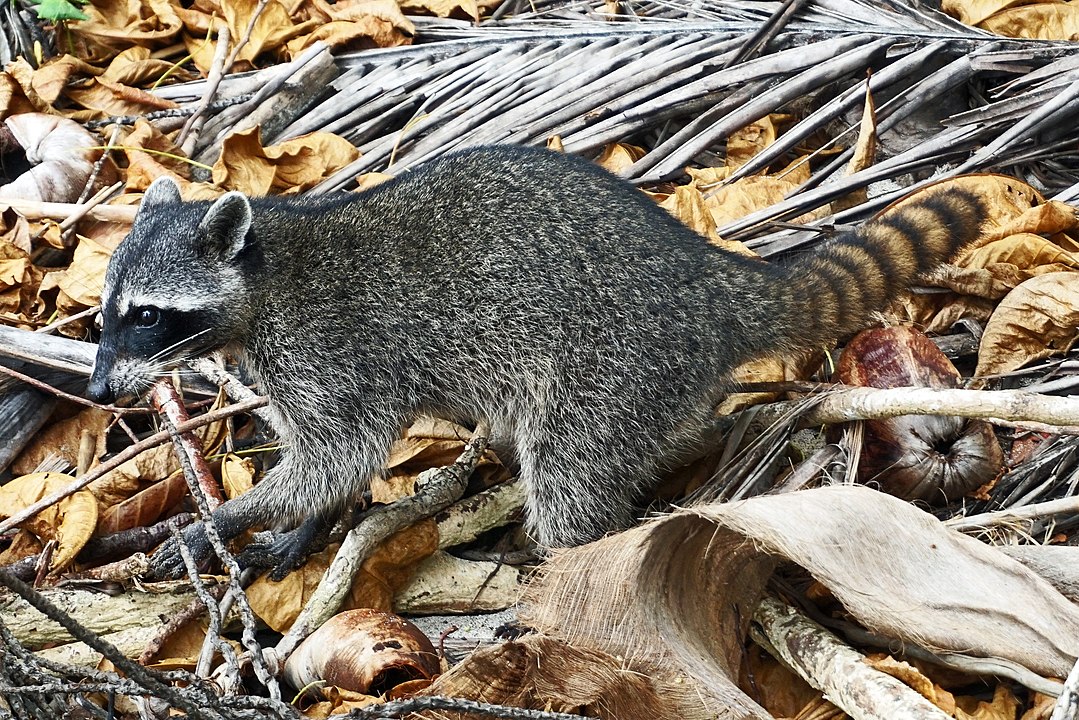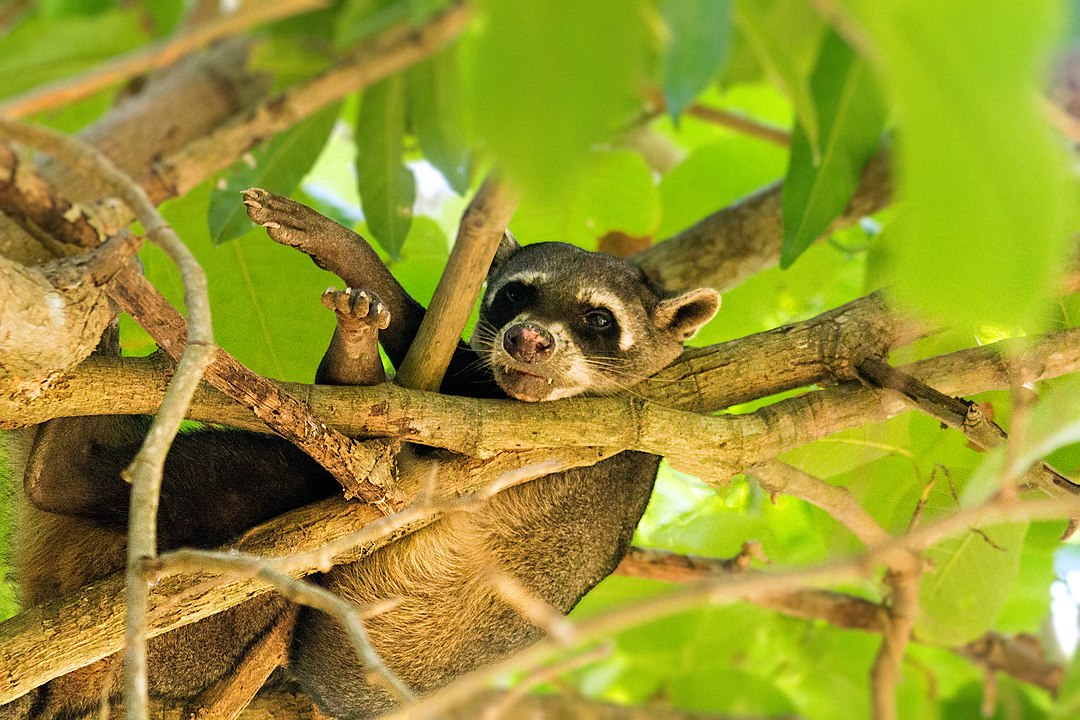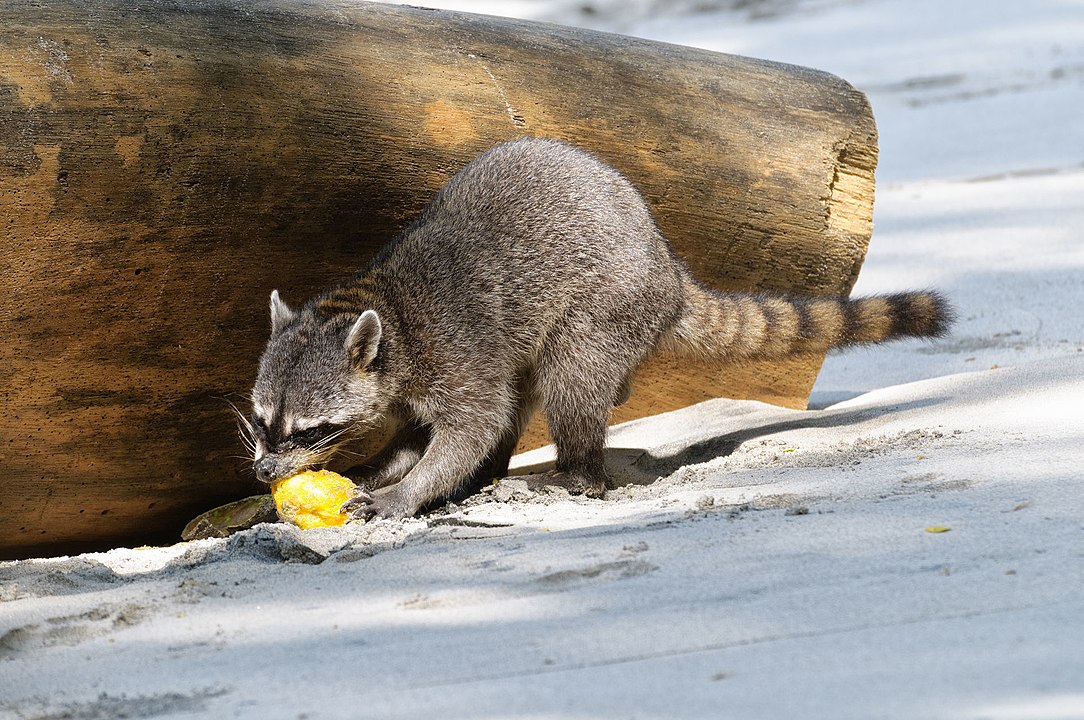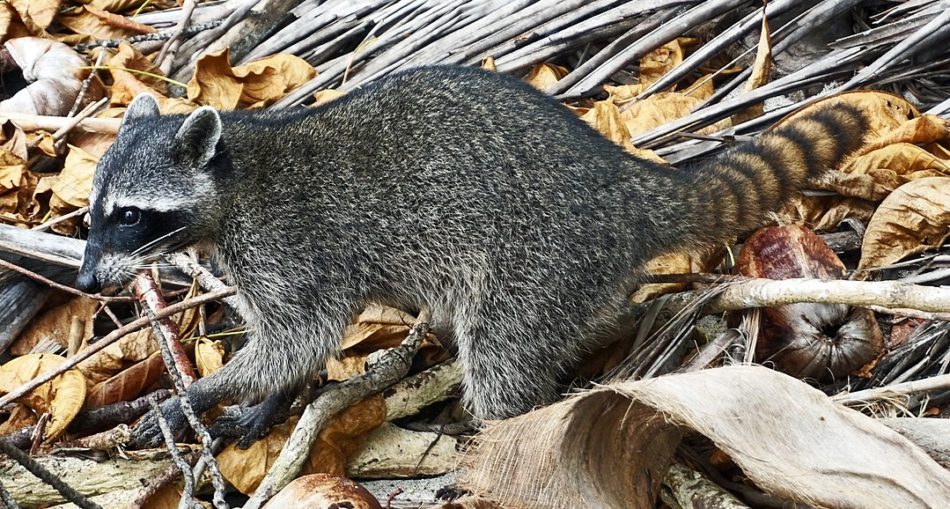The Crab-eating Raccoon is native to Central America and South America in countries like Argentina, Costa Rica Uruguay, and Guyana where it inhabits areas close to waterways. The mammal is nocturnal and spends a lot of time solitary. The Crab-eating Raccoon was named after its preference for crab but is also known as South American Raccoon. The scientific name of this mammal is Procyon cancrivorus. Read on to find out about the habitat, diet, and quick facts about the Crab-eating Raccoon.

Crab-eating raccoon (Procyon cancrivorus) in Manuel Antonio National Park, Costa Rica
Features Of The Crab-eating Raccoon
- Overall Body – The Crab-eating Raccoon is similar to the common raccoon; they share a bushy, ringed tail and a black mask of fur around its eyes which begins to fade around the eyes. The Crab-eating Raccoon is graceful with short fur and may appear small since they do not have underfur. Their cheek teeth are larger having adapted to a diet of food with hard shells. The hair on the napes of the Crab-eating Raccoon points towards its head.
- Colour – The Crab-eating Raccoon is typically brown with dark rings around its tail.
- Paws – Procyon cancrivorus has sharp and narrow claws.
- Limbs – Legs and feet and dark brown and slender.
- Weight & Length – Male Crab-eating Raccoons are typically larger than females of its species. Their head and length of body averages at forty-one to eighty (41-80) cm, the tail is about half its body length and ranges anywhere from twenty to fifty-six (20-56). Shoulder height is around twenty-three (23) cm. Crab-eating Raccoons weighs about four to twenty-six (4-26) lbs.
Scientific Classification Of The Crab-eating Raccoon
Crab-eating Raccoon – Procyon cancrivorus [Scientific name]
- Kingdom: Animalia
- Phylum: Chordata
- Class: Mammalia
- Order: Carnivora
- Family: Procyonidae
- Genus: Procyon
- Species: P. cancrivorus
Habitat Of The Crab-eating Raccoon
The Crab-eating Raccoon is found in a number of habitats especially areas close to rivers, streams, lakes, lagoons and beaches. It may also inhabit some evergreen forests or plains. Rarely, it is found in rainforests like the Amazon.

Crab-eating Raccoon – Photo By Fernando Flores from Caracas, Venezuela – Crab-eating raccoon | Mapache cangrejero (Procyon cancrivorus), CC BY-SA 2.0, https://commons.wikimedia.org/w/index.php?curid=40528248
Diet Of The Crab-eating Raccoon
Quite contrary to what one may think, the diet of the Crab-eating Raccoon is not solely restricted to crabs. The mammal is omnivorous, and consumes lobster, crayfish, oysters and clams when available but will also eat small amphibians, insects turtle eggs, vegetables and fruits. The diet of the Crab-eating Raccoon depends on food availability and seasons.

Crab-eating Raccoon eating fruit – Photo By Christophe Meneboeuf – Own workMore of my photos from Latin America on my photoblog: http://www.pixinn.net, CC BY-SA 3.0, https://commons.wikimedia.org/w/index.php?curid=34787366
Reproduction Of The Crab-eating Raccoon
The Crab-eating Raccoon breeds once annually and their breeding season of the extends from July to September. Males can mate with several females but a female will reject other males once impregnated. Their oestrous cycle lasts eighty to one hundred and forty (80-140) days and gestation from sixty to seven-three days. About two to seven (2-7) kits are born in hollow trees, crevices or abandoned nests. Their eyes are closed and are toothless. Their eyes open at about three (3) weeks and their characteristic black mask will begin to appear. Cubs are weaned at about seven (7) weeks to four (4) months but are independent at eight (8) months of age. Females become more territorial when she has cubs while the male does not partake in the care of the kits.
5 Facts About The Crab-eating Raccoon
- The Crab-eating Raccoon belongs to the order Caniformia, which means they are related to dogs, bears, wolves, walruses, sea lions and seals.
- Both the common raccoon and Crab-eating Raccoon is found in Panama and Costa Rica. In this case, the Crab-eating Raccoon sticks to rivers and streams.
- While the common raccoon thrives in urban environments, the Crab-eating Raccoon is less adaptable and less likely to be found near civilization when compared to the common raccoon.
- If the female Crab-eating Raccoon loses her cubs early into the season she may mate again and have a second litter.
- The young Crab-eating Raccoons mature after a year however they do not mate until they are older because of the older males.
The Crab-eating Raccoon in Guyana
The Crab-eating Raccoon shares many traits with the common raccoon except for their unique love of waterways where they catch crabs, their primary food. However, their diet varies according to the food available and sometimes they can be found munching on insects, fruits and veggies. While they are able to adapt to most environments, they are rarely seen around urban areas.
Article References
- https://animaldiversity.org/accounts/Procyon_cancrivorus/
- https://en.wikipedia.org/wiki/Crab-eating_raccoon
- https://www.naturepl.com/stock-photo-crab-eating-raccoon-procyon-cancrivorus-amongst-vegetation-habituated-image01317702.html
Discover more from Things Guyana
Subscribe to get the latest posts sent to your email.







